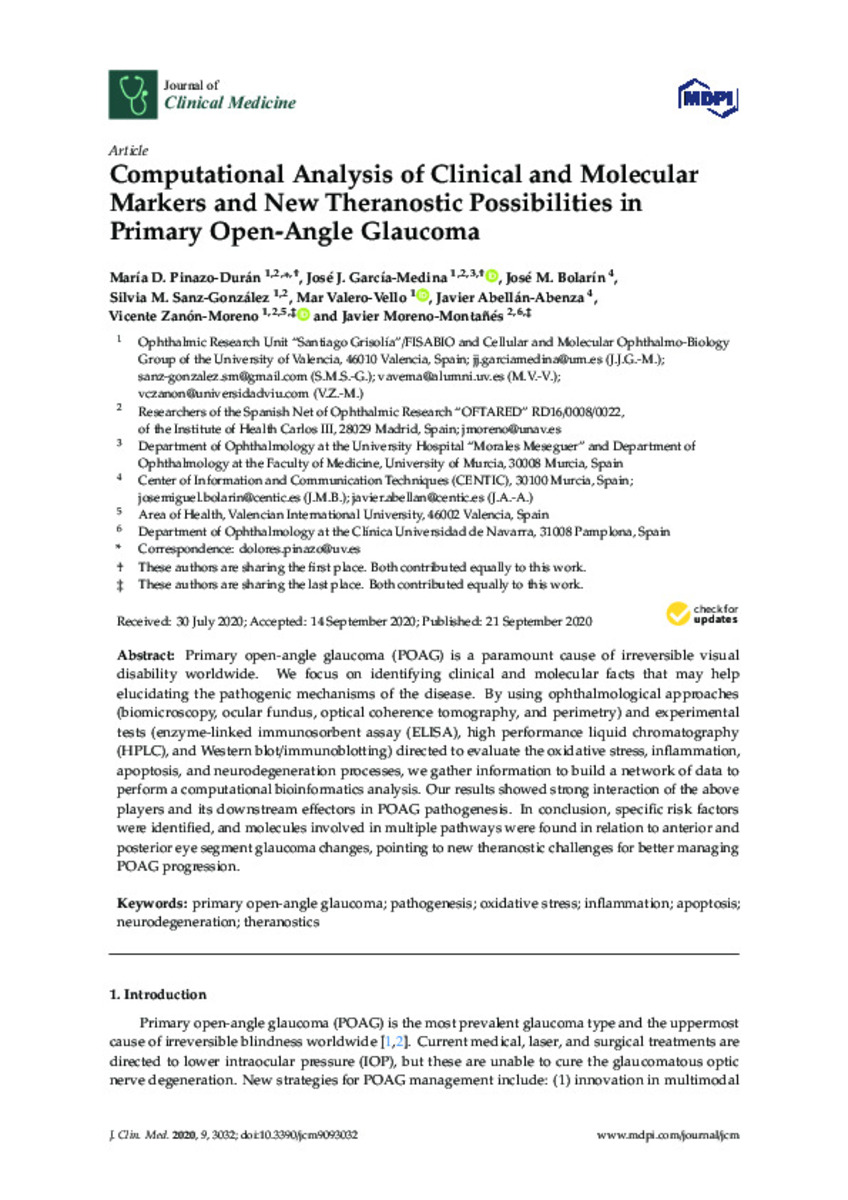Computational analysis of clinical and molecular markers and new theranostic possibilities in primary open-angle glaucoma
Keywords:
Primary open-angle glaucoma
Pathogenesis
Oxidative stress
Inflammation
Apoptosis
Neurodegeneration
Theranostics
Note:
This article is an open access
article distributed under the terms and conditions of the Creative Commons Attribution
(CC BY) license (http://creativecommons.org/licenses/by/4.0/).
Citation:
Pinazo-Duran, M.D. (M. Dolores); Garcia-Medina, J.J. (José Javier); Bolarín, J.M. (José M.); et al. "Computational analysis of clinical and molecular markers and new theranostic possibilities in primary open-angle glaucoma". Journal of clinical medicine. 9 (9), 2020, 3032
Statistics and impact
0 citas en

Items in Dadun are protected by copyright, with all rights reserved, unless otherwise indicated.







